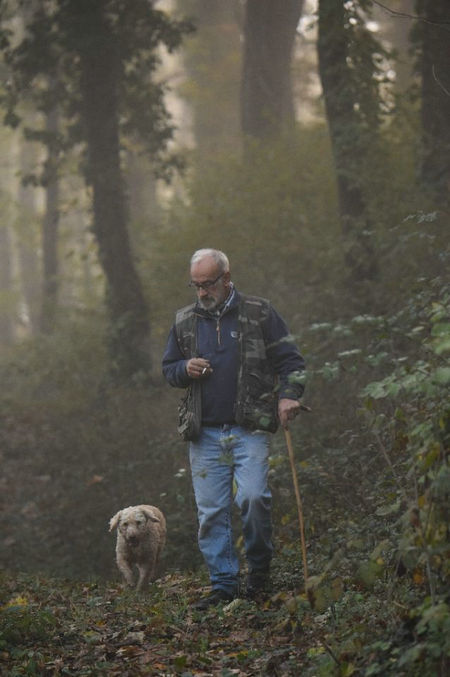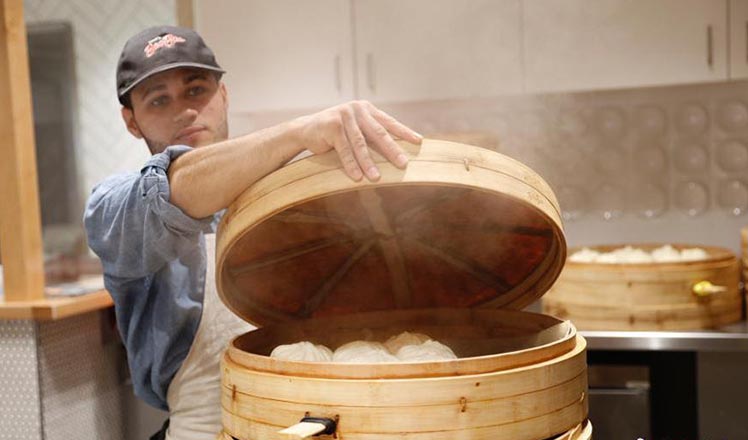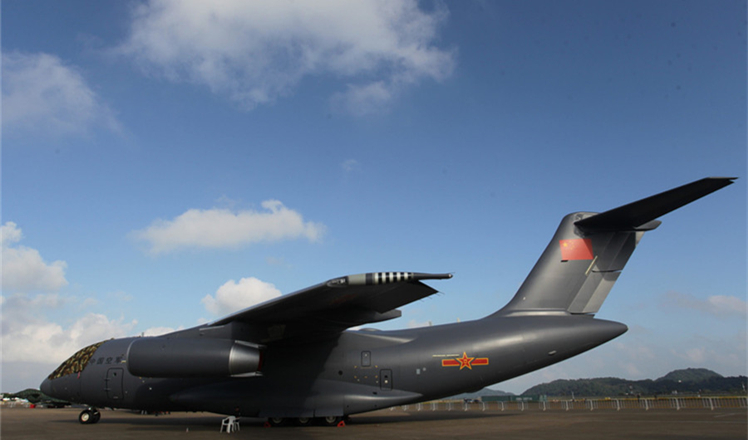Fab fungus
Updated: 2016-10-28 08:17
By Celine Cornu and Giovanni Grezzi(China Daily)
|
||||||||
 |
|
Italian truffle hunter Giovanni Sacchetto and his dog Dora search for truffles in the countryside of Alba in northern Italy. [Photo provided to China Daily] |
The Romagnolo breed is known for its acute sense of smell, but individual dogs still have to be trained, starting with pieces of gorgonzola, the whiffy Italian blue cheese, buried under ground, before graduating to actual truffles. Now when Dora locates a truffle, she wags her tail excitedly over the spot where a valuable tuber awaits-usually buried between 10-30 centimeters below the surface.
For her it is a game-her efforts rewarded with a treat in the form of a biscuit or a little piece of dry bread.
Sacchetto was 14 when he first went truffle hunting, with his grandfather. At the time, it was about putting food on the table, he recalls. Now it is more of a hobby, but secret spots are still jealously guarded. "I've been doing this for 50 years, I know all the plants, all the paths."
At one time, truffles were more plentiful but the cutting of some trees and the effects of pollution on others has reduced the autumnal bounty, he says.
Fears the delicate ecosystem that produces the white truffles could be at risk has triggered a crowdfunding initiative aimed at raising 50,000 euros ($59,422) to ensure better management of the local woodlands.
Antonio Degiacomi, president of the National Center for the Study of Truffles, says wooded areas around Alba have been neglected, with faster growing species threatening to crowd out truffle-friendly trees like oaks and lime trees.
"There is not an imminent threat but we have to be pro-active," he says.
Helpful measures include thinning denser woodland and planting new trees but coordinating action is complicated, notably because the hunters who know where truffles are produced often do not own the land on which they forage.
- Trump's Hollywood Walk of Fame star destroyed
- Maduro activates Defense Council to seek solution to crisis
- UN adopts resolution urging end to Cuban embargo, US abstains for first time
- Russian, German FMs discuss Syrian situation
- Workers wield sledgehammers to tear down Calais 'Jungle'
- Panda-themed contest held to mark Belgium-China ties

 Chinese baozi shop gains popularity in Harvard Square
Chinese baozi shop gains popularity in Harvard Square
 Chinese mariner on record-breaking voyage goes missing
Chinese mariner on record-breaking voyage goes missing
 2045-square-meter photo mosaic breaks world record
2045-square-meter photo mosaic breaks world record
 Red leaves reveal beauty of autumn
Red leaves reveal beauty of autumn
 Tibet mandala: The world in a grain of sand
Tibet mandala: The world in a grain of sand
 Top 10 Chinese tycoons in IT industry
Top 10 Chinese tycoons in IT industry
 Planes ready to take off at Airshow China
Planes ready to take off at Airshow China
 Teacher's spirit keeps village school open
Teacher's spirit keeps village school open
Most Viewed
Editor's Picks

|

|

|

|

|

|
Today's Top News
'Zero Hunger Run' held in Rome
Trump outlines anti-terror plan, proposing extreme vetting for immigrants
Phelps puts spotlight on cupping
US launches airstrikes against IS targets in Libya's Sirte
Ministry slams US-Korean THAAD deployment
Two police officers shot at protest in Dallas
Abe's blame game reveals his policies failing to get results
Ending wildlife trafficking must be policy priority in Asia
US Weekly

|

|







